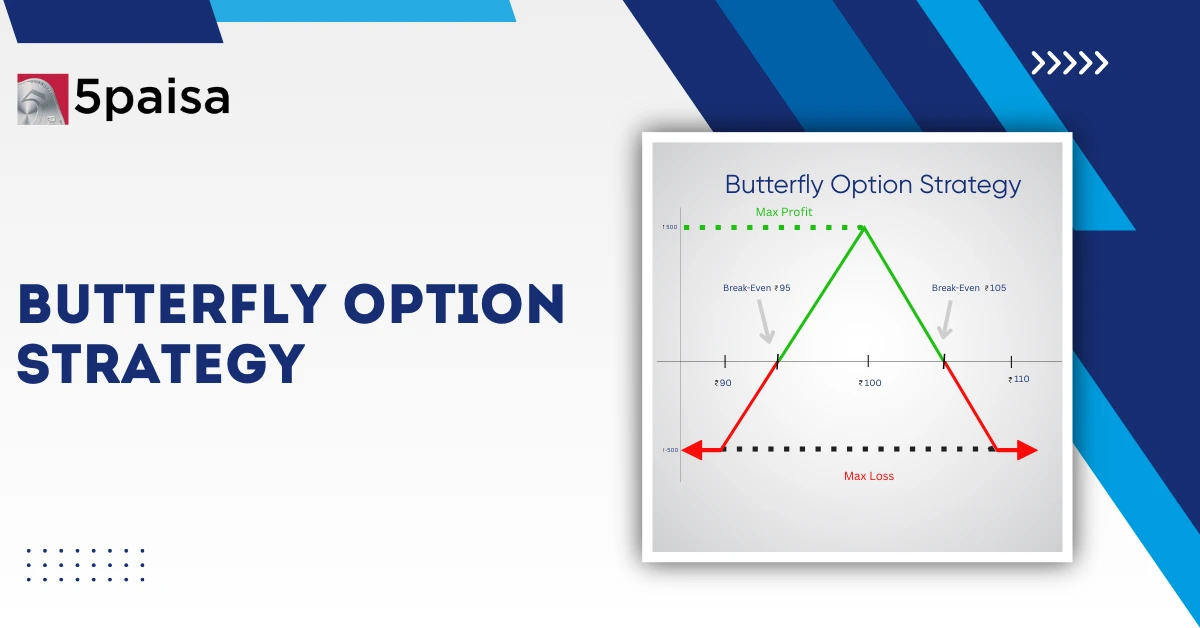Content
- What is the Iron Butterfly Strategy?
- How to Build the Iron Butterfly Strategy?
- How does the Iron Butterfly Strategy Work?
- Example of a Short Iron Butterfly Strategy
- Example of a Long Iron Butterfly Strategy
- Advantages and Disadvantages of the Iron Butterfly Strategy
- When Should Traders Consider Using an Iron Butterfly?
There are many trading strategies for traders to benefit from different market scenarios. Whether the market is highly volatile or if the market movements are limited, traders can deploy the right strategies to benefit from it. Iron butterfly is one such strategy that allows traders to benefit from a neutral market. In this article, we will dive into what is an Iron Butterfly Strategy and how you can construct it.
More Articles to Explore
- Difference between NSDL and CDSL
- Lowest brokerage charges in India for online trading
- How to find your demat account number using PAN card
- What are bonus shares and how do they work?
- How to transfer shares from one demat account to another?
- What is BO ID?
- Open demat account without a PAN card - a complete guide
- What are DP charges?
- What is DP ID in a demat account
- How to transfer money from demat account to bank account
Disclaimer: Investment in securities market are subject to market risks, read all the related documents carefully before investing. For detailed disclaimer please Click here.
Frequently Asked Questions
Now that we have a fair idea of the different ways the combinations of the contract options can be, we have identified six major types of the Butterfly strategy.
For the categories of long and short call and long put and short put butterfly option strategies, we have noticed that each is a three-part strategy. On the contrary, the iron and reverse iron butterfly strategies are based on a four-part process of handling the four option prices with careful analysis and judgment.
Now that we have already understood what a Butterfly strategy is, let's see how different it is from a straddle option strategy. The latter involves two transactions in options on the same underlying, only this time with opposite positions. One has a great danger, the other a low risk.
The purchase or sale of certain option derivatives that enable the holder to benefit heavily relies upon the underlying security changes prices regardless of the direction of price movement, which is thus required.
Well, your risk is reduced but not entirely by the strategy. A loss could result if the asset price expires at the intermediate strike price. The middle strike rate is less than the lowest strike price, and the premiums are paid to represent the greatest loss.
The underlying stock would make the most money if it were outside the wings when the option expired. Every option would expire worthless if the price fell below the lower strike; every option would be exercised and result in a loss if the stock rose over the upper strike.
When the stock price is anticipated to move outside the range between the highest and lowest strike prices, a short Butterfly strategy using calls is the best course of action. However, a short butterfly spread has a smaller profit margin than a long straddle or long strangle.
Loss is recognised if the stock price fluctuates excessively in either direction. Long call butterfly spreads fail to display sufficient profit if volatility is continuous until the stock price nears the center strike price and the spread is very close to expiration.
The higher the strike price, the less the sold strike put less the premium paid, which determines the maximum profit. The trade's maximum loss is capped at the upfront fees and commissions.
When the forecast calls for stock price movement close to the spread's center strike price, a long butterfly spread with calls is the best course of action because long butterfly spreads benefit from time decay. The potential risk of a long Butterfly strategy is constrained, in contrast to that of a short strangle or straddle.
The risk is restricted to the position's cost, which includes commissions, and the potential reward is "substantial" in percentage terms. For this method of purchasing butterfly strategies to be successful, the stock price must remain within the range of the butterfly's lower and upper strike price.



